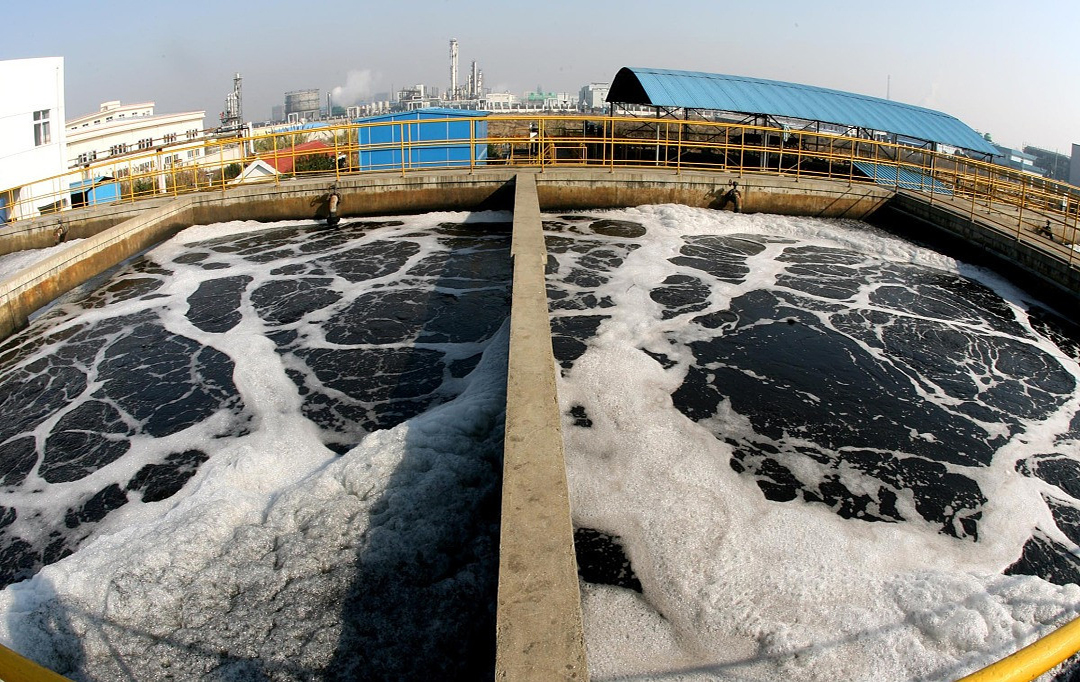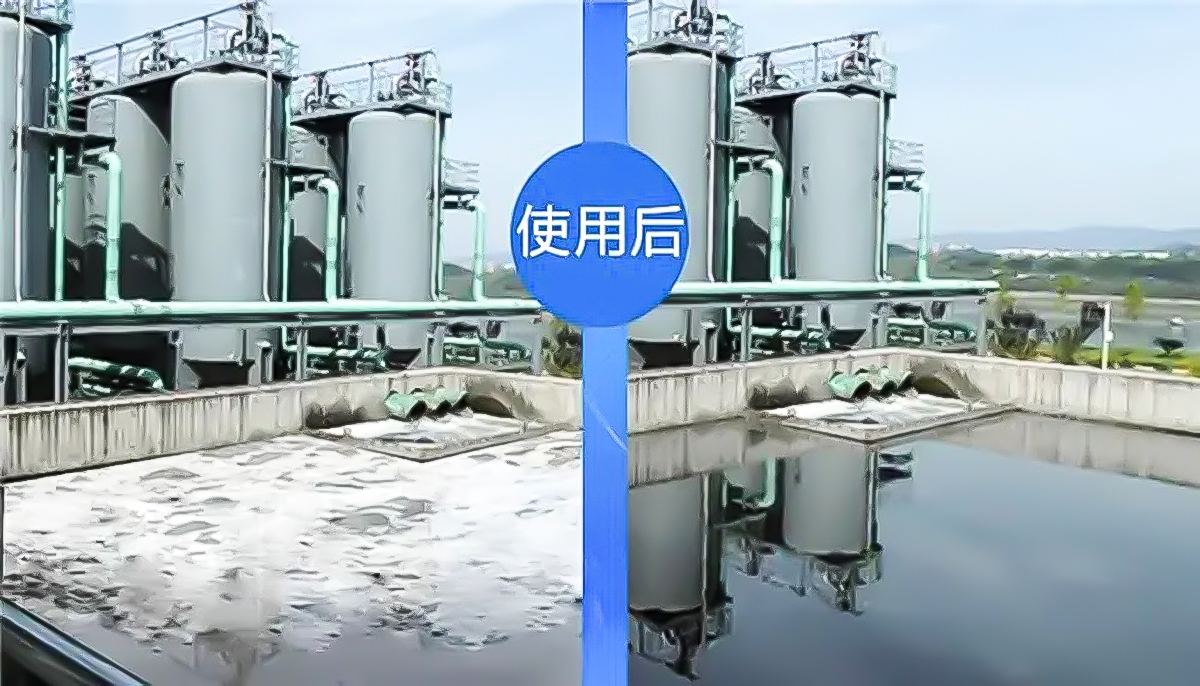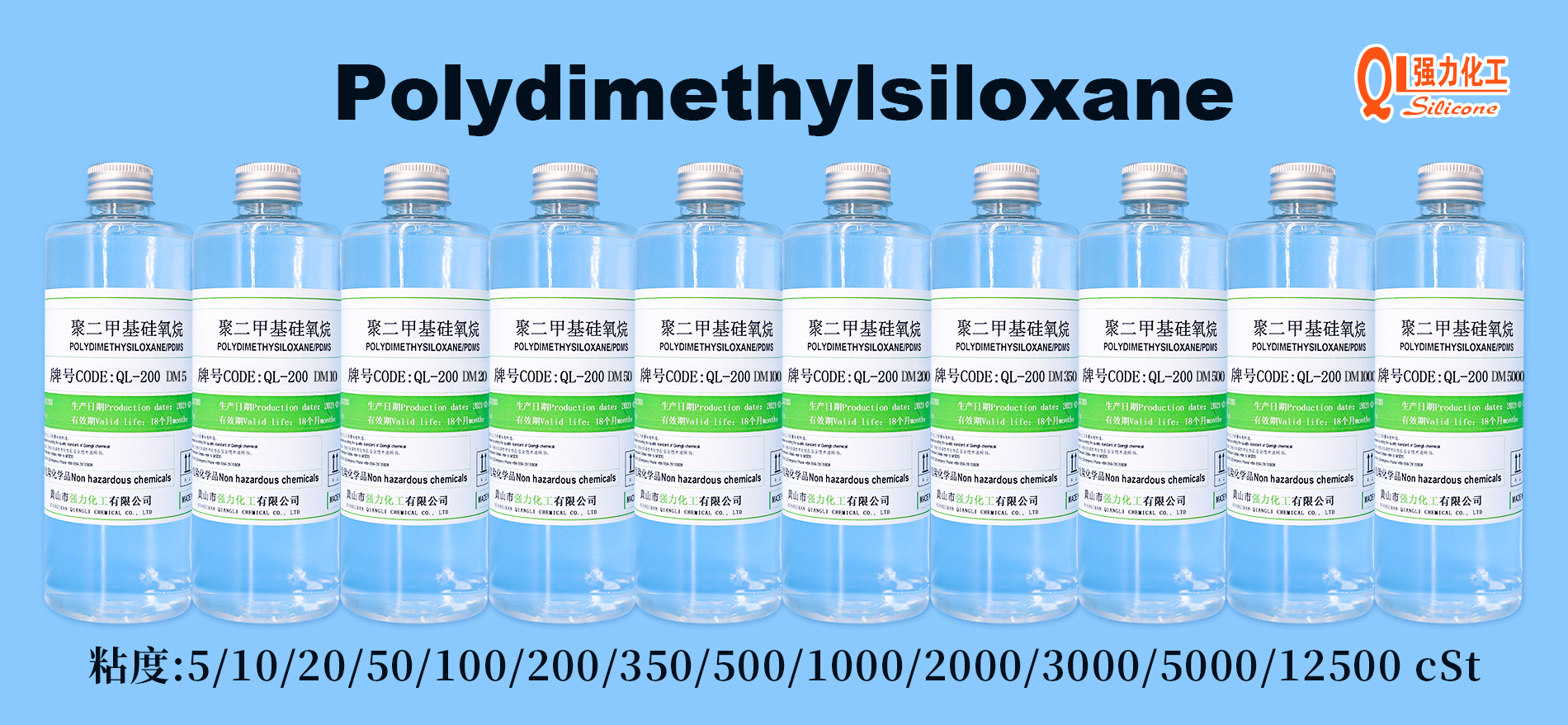With the rapid development of science and technology and industry in the 21st century, the amount of industrial wastewater and domestic sewage has increased rapidly, and the pollution of water bodies has become increasingly serious, threatening our health and safety. Therefore, we need to "turn waste into treasure" through purification and treatment of sewage. During the water treatment process, foam has a great impact on sewage. It is necessary to add sewage treatment defoaming agent to remove the foam in the water quality and make the sewage meet the national discharge standards. Domestic sewage refers to wastewater discharged by people in daily life activities. This wastewater is mainly polluted by domestic waste and human excrement. The quantity, composition and concentration of pollutants are related to people's living habits and water consumption. These domestic sewage will produce a large amount of foam during the treatment process. The foam is caused by the growth and spread of bacteria in the sewage. If you want to eliminate this kind of foam, the editor will introduce the silicon defoaming agent for water treatment today.

Defoaming agents can not only reduce the generation of foam in the early stage of production, but also have a very powerful defoaming function in the later stages of production. It is the superimposed effect of these two phases, so the use of defoaming agents is very common in sewage treatment. Using sewage defoamer can not only save time, but also improve the effect of sewage treatment to a certain extent.
Complex system sewage treatment defoamer: Generally, silicone defoamer is used. It is synthesized from modified silicone and special surface active additives. It has good defoaming, foam suppression and high shear resistance functions. Silicone defoaming agents have excellent defoaming properties and can quickly eliminate foam at lower concentrations. It has high chemical stability, does not easily react with other substances, and can be used in a wide range of pH values and temperatures. In addition, silicone defoamers have low surface tension and can easily penetrate into the foam, thereby rapidly disintegrating the foam structure. It is mainly used for defoaming and suppressing foam in urban sewage, sewer sewage treatment, industrial sewage and wastewater treatment, various types of circulating sewage treatment, industrial sewage, chemical sewage treatment systems and other systems. It is recommended to add high-content silicone defoaming agent before 60E, and the addition amount is in units of 10ppm. It is ideal to use 10-200ppm of defoaming agent for defoaming.

wastewater treatment
Water treatment silicone defoaming agent absorbs the surface tension of the foam, making the foam thinner and causing the foam to burst. By destroying the production of foam, it reduces the generation of foam, which can effectively prevent the generation of liquid bubbles and invade the bubbles from the interface of the bubbles. , the air that gathers bubbles in the liquid forms a large bubble, which becomes larger due to buoyancy and rises to the liquid surface, promoting the deaeration effect. Moreover, the use of silicon defoamer for water treatment will not affect the basic properties of the foaming system, will not harm microorganisms in the water, and will not affect the progress of water treatment, water quality indicator testing and discharge. Able to stably defoam and suppress foam.
Silicone defoamer for water treatment
Silicone defoamer for water treatment has the function of defoaming and inhibiting foam. When the defoamer is sprayed evenly into the foam, it comes into contact with the foam surface and its surface tension is reduced, causing the thin layer to break. The defoaming agent mechanism of this defoaming agent: foam crushing, foam suppression and defoaming. First of all, the foam bursting effect is mainly for liquid foam, which mainly causes the foam to burst by absorbing the surface tension of the foam. Secondly, the foam suppression effect is caused by destroying the foam, so the reduction of foam can effectively prevent the formation of bubbles; thirdly, the defoaming effect invades the bubbles from the interface of the bubbles, and collects the air of the bubbles in the liquid to form large bubbles, which Grows larger due to buoyancy and floats away from the liquid surface, promoting defoaming.
It is normal for industrial wastewater and daily sewage to produce foam. Different water treatment defoaming agent solutions are provided for foaming in different systems of wastewater and sewage treatment. Control the dosage: Add an appropriate amount of silicone defoamer according to the actual situation. Too little may not achieve the desired defoaming effect, while too much may result in unnecessary waste or environmental impact. Regular inspection and maintenance: Regularly check the operating status of the water treatment equipment to ensure that there is no abnormality and a large amount of foam. At the same time, the use of silicone defoaming agents is recorded and evaluated so that the dosing strategy can be adjusted in a timely manner. Combined with other water treatment methods: Silicone defoamer can be used in combination with other water treatment methods (such as chemical precipitation, biological filtration, etc.) to form a comprehensive treatment plan and improve the water treatment effect. Training and guidance: Provide training and guidance to operators on how to use silicone defoamer to ensure they use the product correctly and safely.

Main raw materials of silicone defoamer: dimethyl silicone oil, recommended viscosity 100-1000cst



